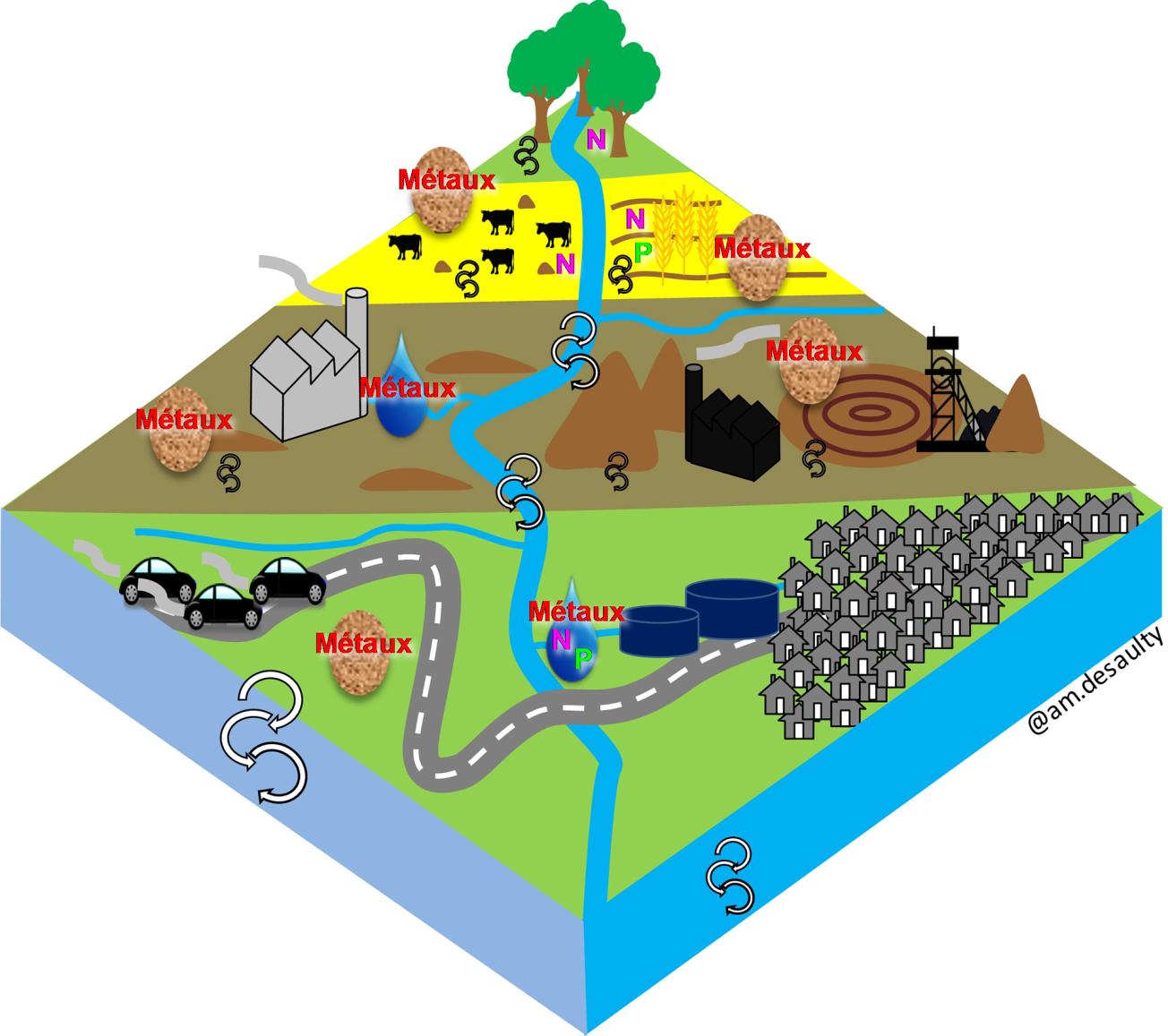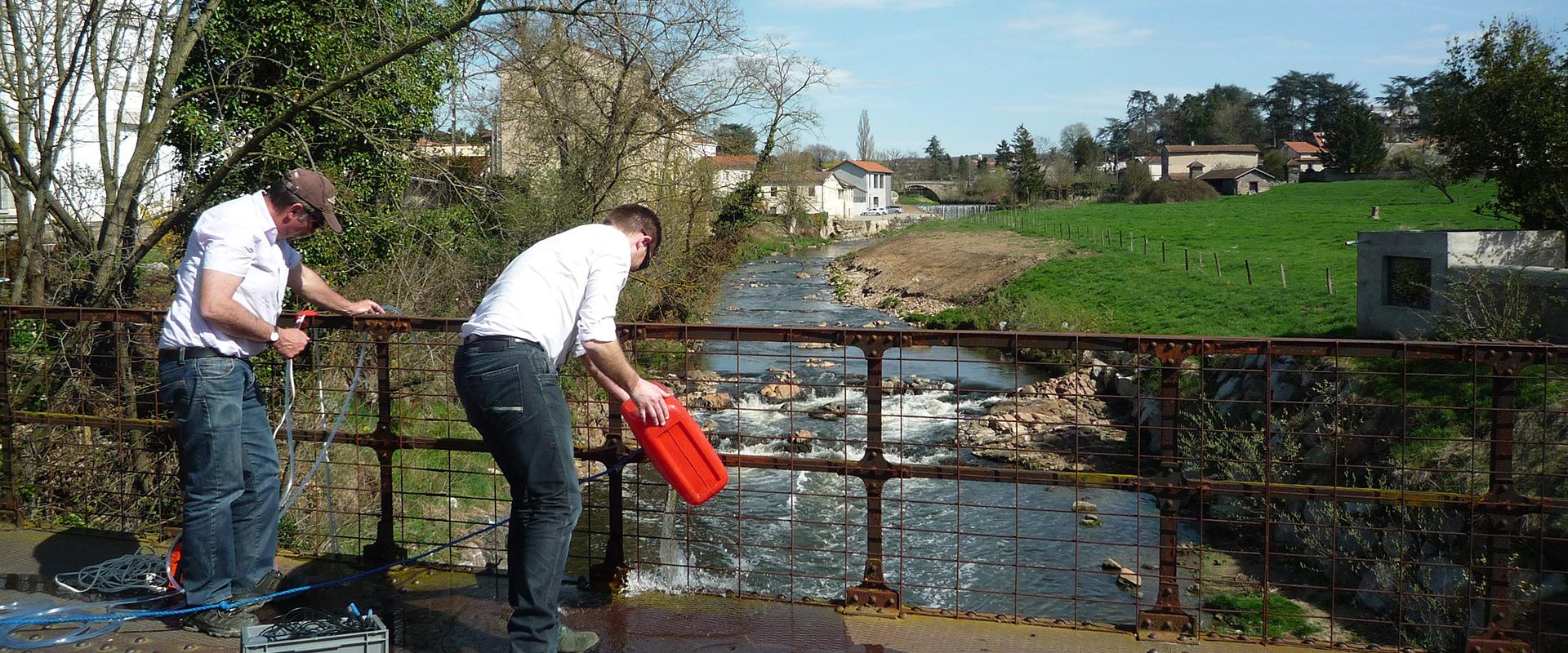
Main sources of metals, nitrogen (N) and phosphorus (P) in catchment areas.
© BRGM – A-M. Desaulty
The need
The Water Framework Directive (WFD) aims, among other things, to prevent and reduce water contamination. Effective measurement programmes to achieve quality objectives require a good knowledge of the origin of the contaminants, especially for those with multiple origins. For instance, nitrogen and phosphorus are of agricultural origin but are also found in wastewater discharges. Similarly, metal emissions are linked to mining, agricultural and industrial activities (the latter via liquid or atmospheric discharges, and the leaching of stored residues/waste).
The results
Within the framework of Theme F “New tools and knowledge to optimise monitoring strategies” of the Scientific and Technical Programme run by AQUAREF (the French reference laboratory for monitoring the aquatic environment), a bibliographic survey was made to assess the state of knowledge and maturity of the use of isotopic tools for environmental issues:
- Nitrate isotopes: the original isotope signatures of contamination sources can evolve during the nitrogen cycle, but they are nevertheless very useful for identifying sources and can give information about processes, e.g. denitrification;
- Not much is known about phosphate isotopes at the present time and more research is needed before they can be used to identify sources;
- Lead isotopes have proved their usefulness in discriminating between natural and anthropogenic sources (gasoline, industry);
- Zinc isotopes are good tracers of the origin of natural, urban and industrial substances. Secondary processes can alter signatures and thus complicate interpretation regarding sources;
- Copper and nickel isotopes have been studied relatively little, and their potential for addressing environmental issues has yet to be fully assessed.
Using the results
Isotopes cannot be used systematically in the regular monitoring networks set up under the WFD; they should only be resorted to for in-depth studies on sectors where specific problems have been identified, e.g. for metals, between a natural and an anthropogenic geochemical background and, for nitrates, an upward trend in concentrations despite the measures taken. In addition, coupling these techniques with other tools (e.g. co-tracers of waste water) or with several isotopic tools (e.g. nitrates and boron) significantly improves our understanding of sources, transformations and the dynamics of environments.
The partners
- French Agency for Biodiversity (AFB)







